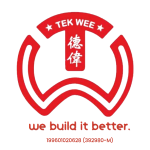A
prestressed concrete pile is a type of deep foundation element made of concrete in which internal stresses are intentionally introduced before any external loads are applied. These stresses are created by tensioning high-strength steel tendons within the concrete to counteract the stresses that will result from service loads.
| Feature |
Reinforced Concrete (RC) Piles |
Prestressed Concrete (PC) Piles |
| Definition |
Concrete piles with standard steel reinforcement (rebars) |
Concrete piles with prestressed steel tendons |
| Type of Reinforcement |
Mild steel rebars (passive) |
High-tensile steel strands/wires (actively tensioned before casting) |
| Pre-tension or Post-tension |
No prestressing involved |
Prestressing applied (usually pre-tensioned) |
| Crack Resistance |
Moderate – may crack under high tension |
High – designed to resist tensile stresses and cracking |
| Load Capacity |
Lower load capacity per unit |
Higher load capacity (for same cross-section) |
| Durability |
More prone to cracking and corrosion if not protected |
Better resistance to corrosion due to tight, crack-free concrete |
| Length & Slenderness |
Generally shorter or thicker |
Can be made longer and more slender |
| Fabrication Method |
Simple casting with rebars |
Requires tensioning equipment and more precise control |
| Cost |
Generally cheaper to produce |
More expensive due to prestressing steel and process |
| Usage |
Small to medium structures, buildings, short-span bridges |
Large buildings, high-rise foundations, marine structures, long-span bridges |
| Common Shape |
Square or circular cross-sections |
Mostly spun (circular) or square precast piles |
Key Features:
-
Material: High-strength concrete and high-tensile steel tendons.
-
Shape: Typically square, rectangular, circular, or octagonal cross-sections.
-
Length: Can be precast in standard lengths and joined to reach the required depth.
-
Prestressing Method:
Call us for a free consultation and quote!


